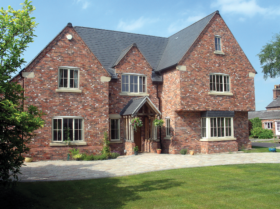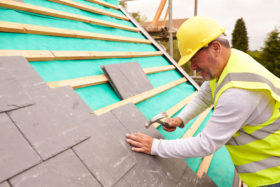
Learn from the experts with our online training course!
Use the code BUILD for 20% off
Learn from the experts with our online training course!
Use the code BUILD for 20% offStone has a long heritage as a building material, characterising countless towns and villages across the UK. As appealing for self-builds as it is for renovation projects, stone walling can be eye-catching, durable and offer plenty of thermal mass.
If you’re building in an area where a particular mineral is prevalent, or renovating an existing stone property, your local planning department may require you to work with materials sourced from the original quarry. Where that resource is no longer available, reclaimed masonry or similar-looking new products become viable options.
A wide range of rock types can be used to produce a variety of building stones, including roofing, flooring and landscaping materials. But when it comes to masonry, the main natural options are sandstone, limestone and granite. Within these brackets are a whole host of regional variations – the gold-hued limestone so prevalent in the Cotswolds is just one celebrated example. Other potential walling stones include slate and flint (both of which can be laid in random patterns or purchased as ready-to-lay blocks).
Cast or reconstituted stone offers a cost-effective alternative to the real thing. Although it lacks the authentic appeal and subtle variation of natural products, used well cast stone can nevertheless provide an attractive finish. What’s more, its regularity means it’s easier – and therefore quicker – to lay.
Both cast and natural stone can be used as the external leaf of a cavity wall or as cladding for other build systems, such as timber frame. Traditionally-built walls are typically around 250-500mm thick. However, natural stone can be ‘backed off’ to around 150mm for cladding purposes, while cast masonry units can be used to build walls as little as 100mm in depth.
Stone can be laid in a variety of patterns. For a house building or renovation project, you’re most likely to use coursed masonry bedded in mortar, though dry laying can be used for garden and retaining walls.
Nevertheless, there’s still plenty of choice. With coursed random rubble masonry – featuring natural stone of varying sizes – approximate courses are used and trued up at set points in the wall height. Rubble stone can be cheap to buy, but is time-consuming to lay. In regular patterns, the stone is dressed (hand worked to size and square) and each individual course is of the same height (though size can vary from row to row). Irregular coursed stone is also dressed, but can be laid in broken courses.
With ashlar masonry, the stone is machine-dimensioned or handworked to uniform sizes and tooled to achieve a fine finish. It is laid in decorative bonds using combinations of stretchers and headers, as with brickwork.
Natural stone walls should be bedded and pointed with a suitable lime-based mortar, while cementitious versions may be suitable for use with reconstituted stone. In most cases, it’s best to specify a mortar that will dry to the same or a lighter hue than the stone itself.
New natural stone is usually sourced directly from quarries. Your designer, conservation officer or planning department should be able to help you track down suitable suppliers. Some reclaim yards stock entire buildings’ worth of stone salvaged from nearby demolitions. Check out www.salvo.co.uk or look locally.
Stone is an expensive material, but you can expect to recoup much of that outlay in the value of your finished home. Reconsituted stone can cost from around £45 per m2 more than standard brickwork, and prices are significantly increased for natural stone. Costs can be reduced by building a ‘facing’ of stone onto a blockwork backing.


Comments are closed.